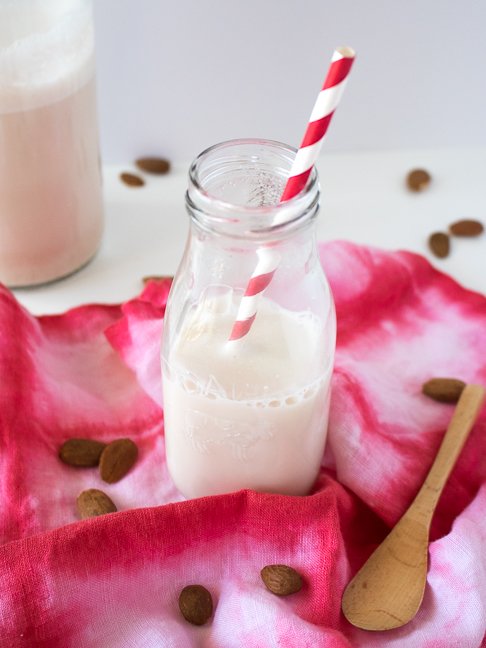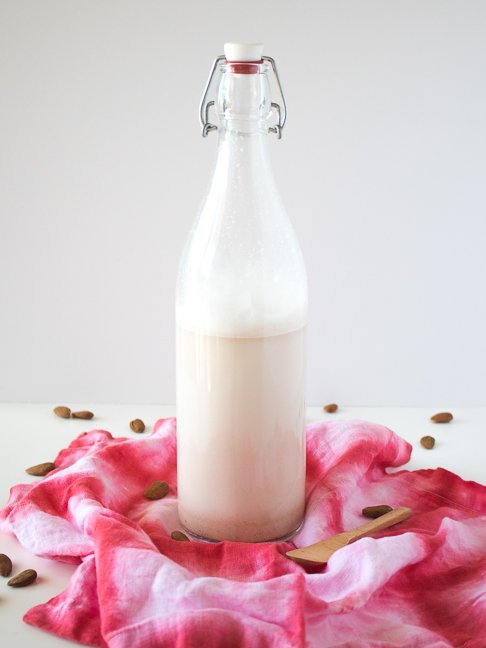
How to make almond milk? It’s a valuable thing to know, since almond milk is a great substitute for cow’s milk and it still provides the nutrients your body needs. That being said, have you ever looked at the ingredients on a container of almond milk? Because store-bought almond milks contain many words you can’t pronounce, it may be better to make almond milk at home. Plus, it’s very cost effective!
Before you make an “I’m not the type to do this” face, I can promise you that making almond milk is not difficult, and in these cases, it’s reassuring to know exactly what’s in the food you’re eating or drinking. Personally, I like to use almond milk primarily in smoothies, as a coffee creamer, and over cereal, but it’s great for any instance in which you normally use cow’s milk. You can even use it in some baking recipes! However, it can change how recipes bake, considering most recipes are designed using cow’s milk, so be sure to do your research.

In case you were wondering, here are just a few of the benefits of almond milk:
- It has calcium, iron, and other B vitamins
- It contains about a quarter of the recommended daily amount of Vitamin D
- Homemade almond milk with no added sweeteners helps lower blood sugar
- It does not taste like cow’s milk (for those who dislike the taste of it)
In addition, almond milk is convenient for travel because it is safe to use at room temperature. When possible, I would recommend storing it in the refrigerator simply because many people prefer drinking it when chilled (including me), but it will not go bad at room temperature, unlike cow’s milk. You can store it for up to a week and make it in larger or smaller quantities as needed, so there’s no reason to buy almond milk again!
Here’s how to make almond milk at home:








